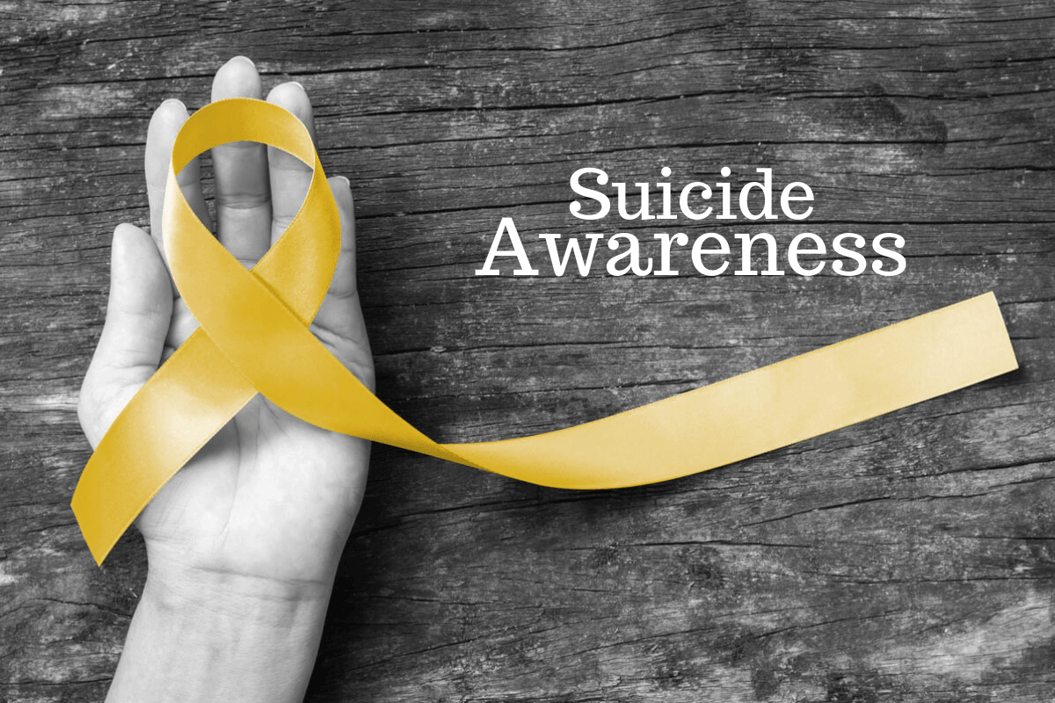
There’s no easy way to begin this post. To lose a loved one is tragic, but to lose one to suicide is nightmarish. There is no age, group, or sex discrimination - it happens to anyone, being the 10th leading cause of death among all age groups.
This is why we want to help build awareness and help prevent any potential lost lives by talking about facts in regards to suicide. This alone is why we write today.
![]() Importance
Importance![]() Signs
Signs![]() Prevention
Prevention![]() Awareness
Awareness
What Is Suicide Awareness and Why Is It Important?
Suicide is the act of a person taking his or her own life. It is a leading cause of death in the United States, with rising death rates in every state, and since 1999, the suicide rate has increased by over 30%. Here are some statistics from the Centers for Disease Control and Prevention (CDC):
- In the US, 123 people die by suicide every day. That is one death every 12 minutes.
- Suicide is the 10th leading cause of death among all age groups.
- Almost 45,000 people die from suicide each year.
The majority of those who succeed in committing suicide are male. It the US, 79% of all deaths from suicide are male, even though females report having suicidal thoughts more frequently. Studies show that the people that most commonly attempt suicide are:
- Teenagers and young adults 15-24 years old
- The elderly (especially those who are divorced or widowed)
- LGBTQ people (especially people of color and Native Americans)
- Trans adults
- Veterans and disaster survivors who show signs of PTSD.
For varying reasons, these populations are 3-5 times more likely to attempt or commit suicide, and the risk of suicide among these populations is significant. This risk increases when these populations experience physical abuse, emotional abuse, and bullying, whether in person or through social media. A staggering 61% of trans adults who have experienced physical abuse have attempted suicide.
Many members of these at-risk groups, when unable to find support from their families or communities, or handle the stresses of old age alone, experience depression and hopelessness, and their risk of suicide increases. Mental illness is also a high contributing factor to suicide.
Warning Signs
Each person is different so each person will exhibit their own signs to look for a way out. Below are some signs that should raise caution:
- Talking about wanting to die or to kill oneself;
- Looking for a way to kill oneself;
- Talking about feeling hopeless or having no purpose;
- Talking about feeling trapped or being in unbearable pain;
- Talking about being a burden to others;
- Increasing the use of alcohol or drugs;
- Acting anxious, agitated, or reckless;
- Sleeping too little or too much;
There are also risk factors that could influence the decision to commit suicide. Such factors are:
- Mental disorders, particularly mood disorders, schizophrenia, anxiety disorders and
- certain personality disorders
- Alcohol and other substance use disorders
- Hopelessness
- Impulsive and/or aggressive tendencies
- History of trauma or abuse
- Major physical or chronic illnesses
- Previous suicide attempt
- Family history of suicide
Approximately 90% of people who die by suicide have a mental disorder at the time of their death. Because of this, the importance of treating mental disorders and conditions are extremely vital for prevention.
Common mental disorders include:
- Depression
- Bipolar Disorder
- PTSD
- Schizophrenia
- Borderline Personality Disorder
- Substance Abuse
Check the next section below to find out ways to seek help if you or your loved one is afflicted with any of the above illnesses.
How to Prevent Suicide
Other than recognizing the signs, prevention is the most important step in addressing suicide.
Get help immediately if you or someone you know is in a crisis and are having suicidal thoughts or signs. Call 9-1-1 for immediate help.
If there is not an immediate medical emergency, but you still find yourself in a crisis situation, there are other options available to you. A relationship with you therapist is highly recommended. Since you may not want to spend time looking for information in the middle of a crisis, save these numbers in your mobile phone or other secure location before you need them. All of these options are toll-free, anonymous, and available 24 hours a day, 365 days a year.
National Suicide Prevention Hotline- 1-800-273-8255 For Deaf or Hard of Hearing/En Español
- 1-800-799-4899 Veterans Crisis Line
- 1-888-628-9454 Disaster Distress Hotline
Additional resources include:
- Text “home” to 741741 to chat with a trained crisis counselor via text message at The Crisis Text Line.
- The Suicide Prevention Resource Center provides information on mental health facilities and prevention efforts in your state: www.sprc.org.
- There are also options available that focus on issues in the LGBTQ community. Some of these will also help you find local help if it is needed:
- For the LGBTQ community, The Trevor Project is the leading national organization providing crisis and suicide prevention services for young teens to adults (ages 13 - 24). You can find them at www.thetrevorproject.org or 1-866-488-7386.
- The GLBT National Help Center provides peer-support and resource information to people with questions regarding sexual orientation and/or gender identity via three hotlines: the GLBT hotline, GLBT National Youth Talkline, and the SAGE LGBT Elder Hotline. They also offer online peer support chat and an extensive database of LGBTQ resources at www.glbhotline.org or 1-800-246-7743.
- Lastly, the Trans Lifeline is dedicated to the well-being of transgender individuals. Their staff consists of transgender people that volunteer to help the lives of the trans community. Locate them at www.translifeline.org or 1-877-565-8860.
Ways to Raise Awareness
Raising awareness for suicide prevention has never been more important that it has now. Easy ways to begin would be to spread suicide prevention on social media, volunteer at hotlines, join or start a local chapter, and fundraise events with suicide prevention organizations.
You could participate in the many awareness-raising activities that happen throughout the country.
- September is National Suicide Prevention Month. All month, mental health advocates, prevention organizations, survivors, allies, and community members unite to promote suicide prevention awareness.
- National Suicide Prevention Week is the Monday through Sunday surrounding World Suicide Prevention Day. It’s a time to share resources and stories, as well as promote suicide prevention awareness.
- World Suicide Prevention Day is September 10. It’s a time to remember those affected by suicide, to raise awareness, and to focus efforts on directing treatment to those who need it most.
Come out in September with your local church, school, business, organization or group to help serve your community.
More importantly, one way to spread awareness rapidly would be to create your own suicide prevention wristband. These yellow-gold or turquoise wristbands are popular and can be easily catered to each person. Contact rapidwristbands.com to create your custom suicide awareness wristband today.
Final Thoughts
You aren’t alone. Suicide is a horrendous tragedy that affects millions, a knife that shatters families and communities. We are passionate about helping you or others who are suffering. Rapid Wristbands stands with you, before and after the storm.
Resource:
"Understanding School Violence"
.png)
.png)
.png)


.png)
.png)

.png)
.png)
.png)
.png)
.png)
.png)
.png)
.png)
.png)
.png)
.png)
